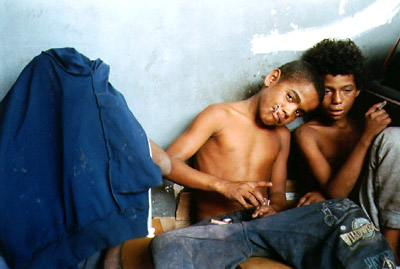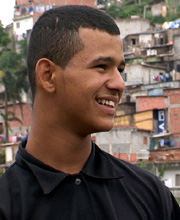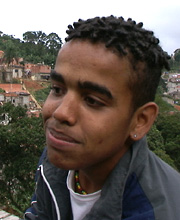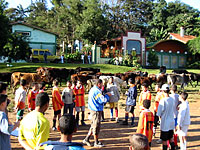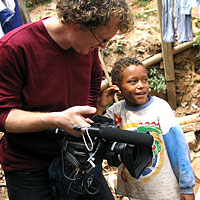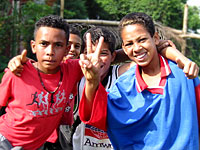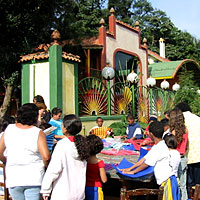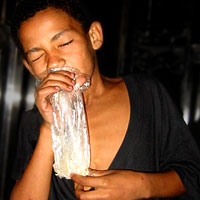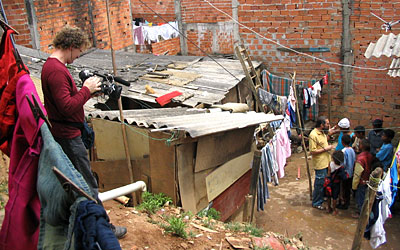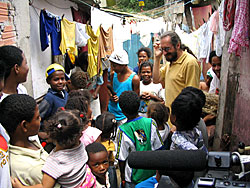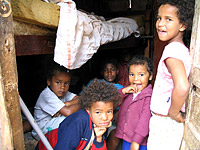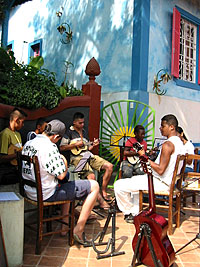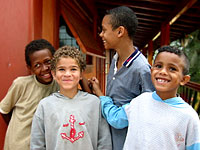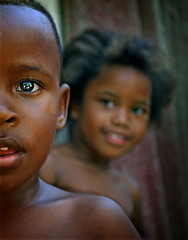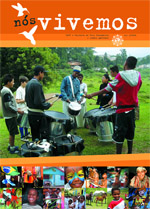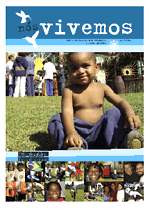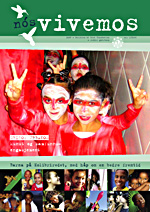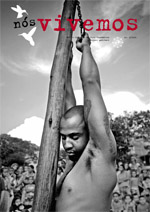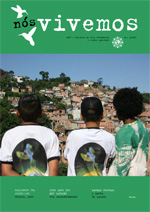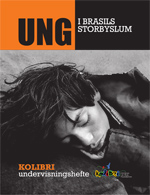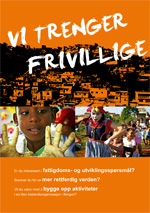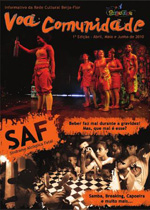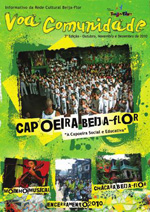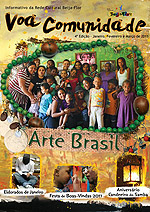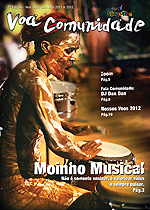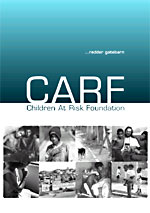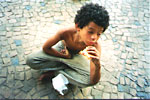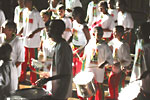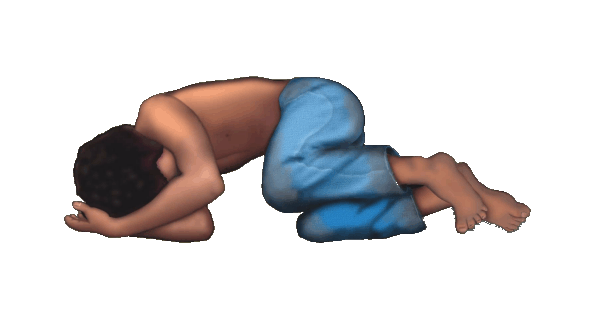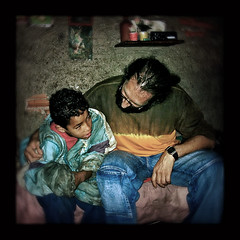
The São Paulo youth rehabilitation system institutes reforms.
Youth in Conflict with the Law
For those of us working with children and youth in conflict with the law, it comes as no surprise that the Foundation for the Well-Being of Minors – FEBEM, is once again the object of criticism by those fighting to protect the rights of Brazil’s younger citizens. Any minimally decent human being with respect for human dignity would react strongly to the degrading and humiliating conditions many of Brazil’s youth in conflict with the law are being held under.
The situation, even after such drastic actions as the one ordered by São Paulo’s once State Governor, the since deceased Dr. Mario Covas, has not changed for the better. In 1999 Covas ordered the immediate demolition of São Paulo’s main Febem youth detention complex “Imigrantes”, following internal riots among the more than 2500 detained youngsters, which caused the death of several of them. The complex was originally meant to cater for only 1200.

The remains of the FEBEM youth detention complex “Imigrantes” after its demolition. Several of CARF’s former street children have spent time behind the walls of this “concentration camp” during the authorities feeble attempts to remove them from the streets.
An international expert on prison conditions, invited to accompany an Amnesty International delegation to Brazil in October 1999, wrote in his report of São Paulo's juvenile detention centres: “I should say as clearly as possible that I have never seen children kept in such appalling conditions...In my view the place should be closed down.”
In the July 2000 Amnesty International report “Waste of LIves”, the FEBEM Juvenile Detention Centres in São Paulo were referred to as: “a human rights crisis, not a public security issue”.
But still the material presented below collected from various sources by COAV – Children and Youth in Organised Armed Violence presents the same situation presented by Amnesty’s report more than four years ago. The system is obviously failing, whilst the problem of youth in conflict with the law in Brazil steadily grows at a frustrating rate, in pace with the production of hoards of inadequately prepared youngsters from an extremely deficient public school system. The fact that decent jobs in Brazil are few and far between, even for those with good enough qualifications from private schools and universities, doesn’t make the situation any easier. For many, a world of crime is their only solution for survival.
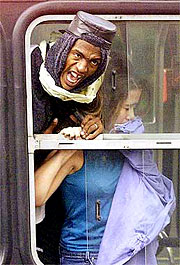
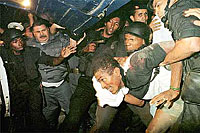
The problems of youth in conflict with the law in Brazil steadily grows at a frustrating rate. The famed bus hijacking by a former street kid, survivor from the even more famous Candelaria assassination of 8 street children in Rio de Janeiro in 1993, was a horrifying example of the failing system.
I have no doubt that programmes similar to our own Street Migration Prevention Programme at Hummingbird, situated only a few miles away from the ruins of the FEBEM complex at Imigrantes, need to be adopted and implemented by the state system if we are to even come anything close to what we can call a solution. If we merely let another four years pass without implementing some drastic changes to this system then I’m afraid we will have to face even more violence and death in our struggle to rehabilitate the public victims of these heavily state-sponsored “Criminal Factories”. - Gregory J. Smith, CARF.
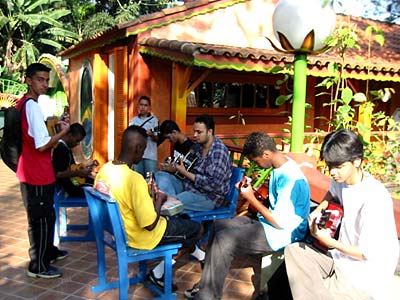 The nurturing environment of our Hummingbird Activity Centre in Diadema, Saõ Paulo, facilitates the participation of all children and young people, no matter what their past may hide.
01 December 2004
The nurturing environment of our Hummingbird Activity Centre in Diadema, Saõ Paulo, facilitates the participation of all children and young people, no matter what their past may hide.
01 December 2004 – There are 77 juvenile rehabilitation units of the Fundação Estadual do Bem-Estar do Menor (FEBEM). The system houses in the state of São Paulo 5,700 juveniles, watched over by nearly 9,000 employees. FEBEM has been regularly accused of housing adolescents in sub-human conditions, allowing the practice of torture, and not abiding by Brazil’s Child and Adolescent Statute (ECA).
Over the last 20 months, 13 adolescents have died in FEBEM units. Even though directors known for their human rights advocacy have headed the system, FEBEM continues to be plagued by rebellions and accusations of abuse by employees.
“Autopsies show that summary executions have occurred,” says Heloísa Machado de Almeida, lawyer of the human rights organization
Conectas. The organisation is taking the system to court and is demanding compensation for victims of abuse.
The Brazilian courts ruled that the system had until November to institute reforms and improved hygiene and sanitation. If it does not do so, the president of FEBEM will have to pay 1,000 Reais (approx. USD$350) per day out of his own pocket.
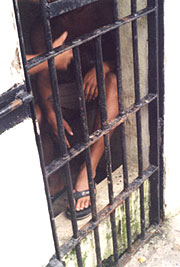
 The high number of incarcerated youth in Brazil reflects the immensity of the problem. Torture in youth detention centres has been a central theme in many passed reports but still continues.
New regulations
The high number of incarcerated youth in Brazil reflects the immensity of the problem. Torture in youth detention centres has been a central theme in many passed reports but still continues.
New regulations
In October, FEBEM announced new internal regulations, with the rights and duties of adolescents in the system clearly defined. The document, which says that the foundation will be open to human rights activists, represents the biggest change in the system, at least on paper, since 1976.
“There were sporadic norms and decisions made, which involved disciplining individual units, but there was no overall regulation,” says state secretary of Justice Alexandre de Moraes. “Many times, the adolescent does not know what his role is or what his rights are,” says Child and Youth public defender Wilson Tafner.
With the adoption of the new regulations, certain rules must be followed, such as calling adolescents by their names. Infractions are classified on a scale from minor to major, with specific punishment for each classification. The harshest punishment is semi-isolation, for no more than five days.
According to Child and Youth Court judge Mônica Paukoski, adolescents with good behaviour who show an interest in cultural and sports activities will receive benefits, such as group outings, weekend visits and letters detailing good conduct to be sent to the Child courts.
“Transparency and normalisation were, for the judiciary, fundamental,” says the judge.
Every three months, FEBEM will evaluate the behaviour of interns. “If he shows that he is ready to return to society, we will send the evaluation to the judiciary. The idea is to shorten their waiting time,” says the state secretary.
 Capoeira is probably the most important integrational activity at Hummingbird, where 250 children and young people representing many different backgrounds participate. See: Capoeira Beija-Flor
Deaths and break-outs
Capoeira is probably the most important integrational activity at Hummingbird, where 250 children and young people representing many different backgrounds participate. See: Capoeira Beija-Flor
Deaths and break-outs
The last FEBEM death was in August, when an 18 year-old was hung. In January, two 17 year-olds were shot. In June of last year, another 17 year-old died of burns.
In 2004, FEBEM registered more than 716 break-outs, with 348 adolescents re-captured. In July, 30 employees at the Raposo Tavares complex in the city of São Paulo were accused of beating interns with sticks and gas canisters. The Public Ministry opened an investigation into the incident, which also received the attention of Amnesty International.
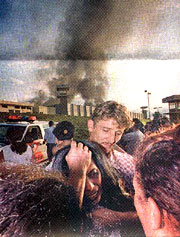
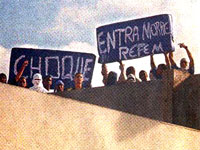 Rebellions are common place in almost all units of FEBEM where youth in conflict with the law are incarcerated. This heated up situation outside the Franco da Rocha complex, which was supposed to substitute the infamous Imigrantes complex, also ended up with deaths.
Rebellions are common place in almost all units of FEBEM where youth in conflict with the law are incarcerated. This heated up situation outside the Franco da Rocha complex, which was supposed to substitute the infamous Imigrantes complex, also ended up with deaths.
As a result, FEBEM president Marcos Monteiro suspended Raposo Tavares director José Christiano Viana. In addition, the justice system investigated the unit and concluded that the interns had been kept under lock-down – without access to a recreational patio, to the dining room and to bathrooms.
Sources: Istoé, 20/9; O Estado de S. Paulo, 12/8; Folha de S. Paulo – 20/10.
For this article in Portuguese,
please click here!
 New report reveals the state of juvenile detention centres in Brazil
New report reveals the state of juvenile detention centres in Brazil
| 10 December 2004 - Overcrowded, filthy and violent. The Human Rights Watch (HRW) report “Real Dungeons: Juvenile Detention in the State of Rio de Janeiro,” released on December 7, casts a grim picture on the state of adolescent detention centers in Rio de Janeiro. The Department of Socio-Educational Action (DEGASE), the authority responsible for maintaining the centers, reacted to the report with surprise and anger. - COAV | 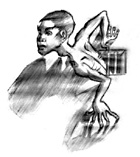
“Free us from FEBEM!”
Drawing by Marcos Vinicius do Nascimento at The Hummingbird Activity Centre |


